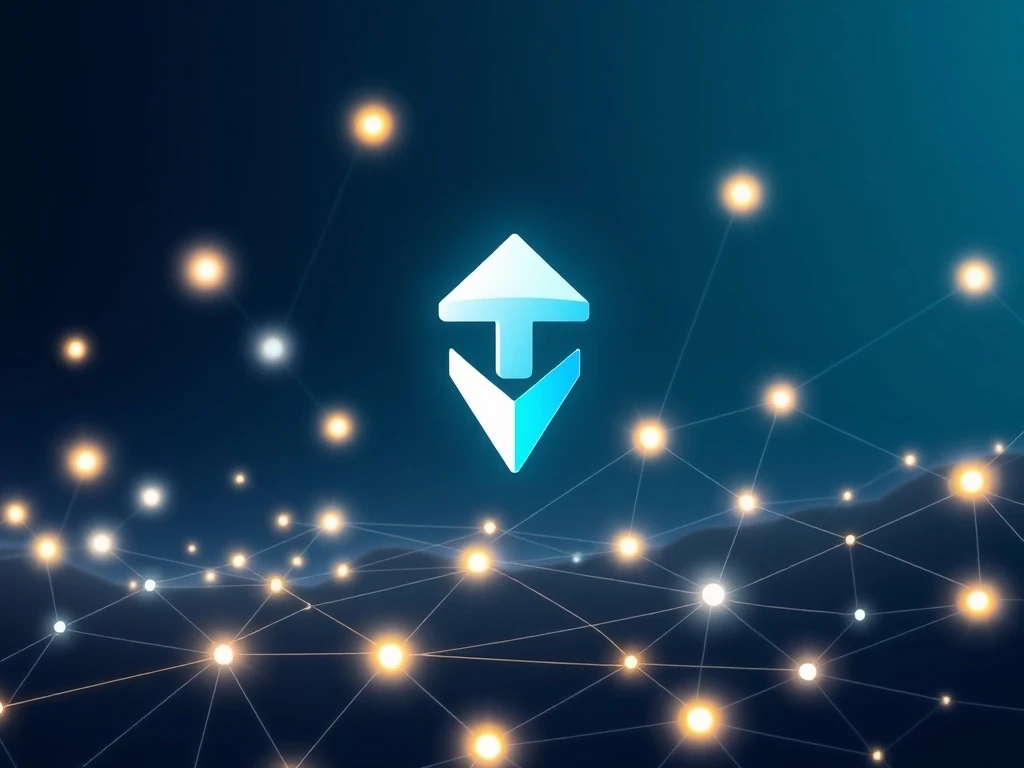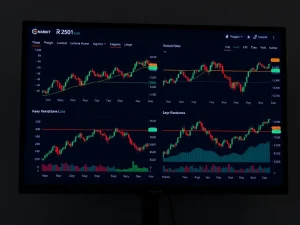Tether USDT: Crucial Reversal on Blockchain Support Impacts Five Chains

A significant development has emerged in the stablecoin sector. Tether, the issuer of the world’s largest stablecoin, Tether USDT, recently reversed a key decision. Initially, the company planned to completely freeze USDT smart contracts on five specific blockchains. However, after considerable community feedback, Tether has adjusted its approach. This means USDT tokens on Omni Layer, Bitcoin Cash SLP, Kusama, EOS, and Algorand will remain transferable. This crucial update offers a new perspective for users on these networks, highlighting the responsive nature of major crypto players to their communities.
Tether USDT’s Evolving Blockchain Support Strategy
Tether initially intended to fully cease support for USDT on these five blockchains by September 1. This would have rendered the tokens completely unusable. However, the company received extensive feedback from the affected communities. Consequently, Tether decided against freezing the smart contracts. This adjustment demonstrates a willingness to adapt strategies based on user input. While tokens remain transferable, Tether will no longer directly issue or redeem USDT on these chains. This marks a clear shift in their operational model for these specific networks. The tokens will continue to exist, yet they will not receive the same level of official support as other Tether tokens.
This revised plan reflects Tether’s ongoing efforts to streamline its operations. It also underscores its commitment to maintaining a robust and efficient infrastructure. Tether aims to focus resources on blockchains with strong developer activity and high user demand. This strategic alignment ensures optimal resource allocation. The initial sunsetting process for some of these blockchains began nearly two years ago. For instance, Tether announced it would no longer issue USDT on Omni Layer, Kusama, and Bitcoin Cash SLP in August 2023. More recently, in June 2024, minting was halted on EOS and Algorand. The latest decision represents a partial reprieve for users on these networks.
Impact on USDT Circulation Across Affected Chains
The decision to allow continued transferability primarily affects a few specific blockchains. A review of existing USDT circulation reveals varying levels of impact. The Omni Layer stands out as the most significantly affected network. It currently holds a net circulation of approximately $82.9 million in USDT. This substantial amount means many users on Omni Layer will benefit from the reversal. EOS, another impacted blockchain, has about $4.2 million worth of USDT. In contrast, Bitcoin Cash SLP, Algorand, and Kusama each hold less than $1 million in USDT. Therefore, the direct financial impact of this reversal is most pronounced for the Omni Layer community.
- Omni Layer: $82.9 million USDT
- EOS: $4.2 million USDT
- Bitcoin Cash SLP: Under $1 million USDT
- Algorand: Under $1 million USDT
- Kusama: Under $1 million USDT
This data highlights the differing levels of adoption for USDT across these older or less active chains. Tether’s strategy aims to optimize efficiency. It seeks to balance supporting existing users with focusing on future growth areas. The company’s decision acknowledges the presence of existing token holders. It ensures their assets remain accessible, even without new issuance or redemption services. This approach minimizes disruption while allowing Tether to pivot strategically.
Focusing on Thriving Crypto Ecosystems
Tether’s broader strategy prioritizes supporting crypto ecosystems that demonstrate strong developer activity, scalability, and significant user demand. This selective approach allows Tether to allocate resources more effectively. Tron and Ethereum remain the two primary blockchains for USDT. They boast impressive circulation figures. Tron hosts $80.9 billion worth of USDT, while Ethereum carries $72.4 billion. These figures underscore their dominance in the stablecoin landscape. BNB Chain secures the third spot with $6.78 billion in USDT supply, according to DeFiLlama data. These leading chains represent the core of Tether’s operational focus.
Furthermore, other thriving crypto ecosystems are attracting substantial stablecoin activity. Solana, along with Ethereum layer-2 solutions like Arbitrum and Base, are prominent examples. However, these platforms primarily utilize Circle’s USDC stablecoin rather than USDT. This indicates a competitive landscape within the stablecoin market. Tether’s decision to maintain a limited presence on the five aforementioned chains, while shifting focus, aligns with its long-term growth objectives. It aims to foster innovation and adoption where it matters most. By concentrating on high-growth areas, Tether strengthens its position as a market leader.
The Broader Stablecoin Market and Future Growth
The overall stablecoin market continues to expand rapidly. CoinGecko data shows the total market capitalization of stablecoins currently sits at $285.9 billion. USDT leads this market with a staggering $167.4 billion. USDC follows with $71.5 billion. This highlights the significant role stablecoins play in the broader cryptocurrency landscape. Their stability and utility make them essential for trading, remittances, and decentralized finance (DeFi) applications. The market’s robust growth reflects increasing mainstream acceptance and integration of digital assets.
Recent legislative developments further support the stablecoin market’s trajectory. Last month, US President Donald Trump signed the GENIUS Act into law. Many analysts believe this act will bolster US dollar dominance. It promotes dollar-pegged stablecoins, positioning them as rivals to other national currencies. This legislative backing reinforces the dollar’s role as the world’s leading reserve currency. The US Department of the Treasury projects the stablecoin market could reach an astonishing $2 trillion by 2028. Such projections indicate a massive potential for expansion and innovation within this sector. Tether’s strategic decisions, including its approach to blockchain support, are made within this dynamic and rapidly evolving market context. The company consistently adapts to maintain its competitive edge and market leadership.
Understanding Tether’s Strategic Pivot
Tether’s decision to not fully freeze smart contracts on Omni, Bitcoin Cash SLP, Kusama, EOS, and Algorand represents a nuanced strategic pivot. While new issuance and redemption are discontinued, the ability to transfer existing tokens remains. This provides a soft landing for users. It avoids a complete disruption that a full freeze would have caused. The move balances operational efficiency with community goodwill. Tether prioritizes high-volume, high-activity blockchains. This focus aligns with its goal of maximizing impact and utility. However, it also acknowledges the legacy and existing user base on older chains.
This approach allows Tether to phase out full support gracefully. It minimizes potential negative sentiment or financial losses for users. The company learns from feedback. This adaptability is key in the fast-paced crypto world. Tether continues to innovate and expand its offerings. It recently invested in AI with a $1.17 billion Northern Data acquisition, alongside Rumble. This diversification shows Tether’s ambition beyond just stablecoins. Yet, its core business remains the reliable issuance of USDT. The strategic adjustments to blockchain support demonstrate a pragmatic and user-conscious approach. Tether aims to solidify its position while navigating the complexities of a multi-chain environment.
In conclusion, Tether’s revised plan for USDT on five blockchains marks an important moment. It showcases a balance between strategic focus and community responsiveness. Users on Omni Layer, EOS, and others can still move their tokens. This decision ensures continuity for existing holders. Simultaneously, Tether strengthens its commitment to leading crypto ecosystems like Tron and Ethereum. The broader stablecoin market continues its robust expansion. Tether remains a central player, adapting its strategies to meet evolving demands and opportunities. This measured approach underscores Tether’s role in shaping the future of digital finance.









